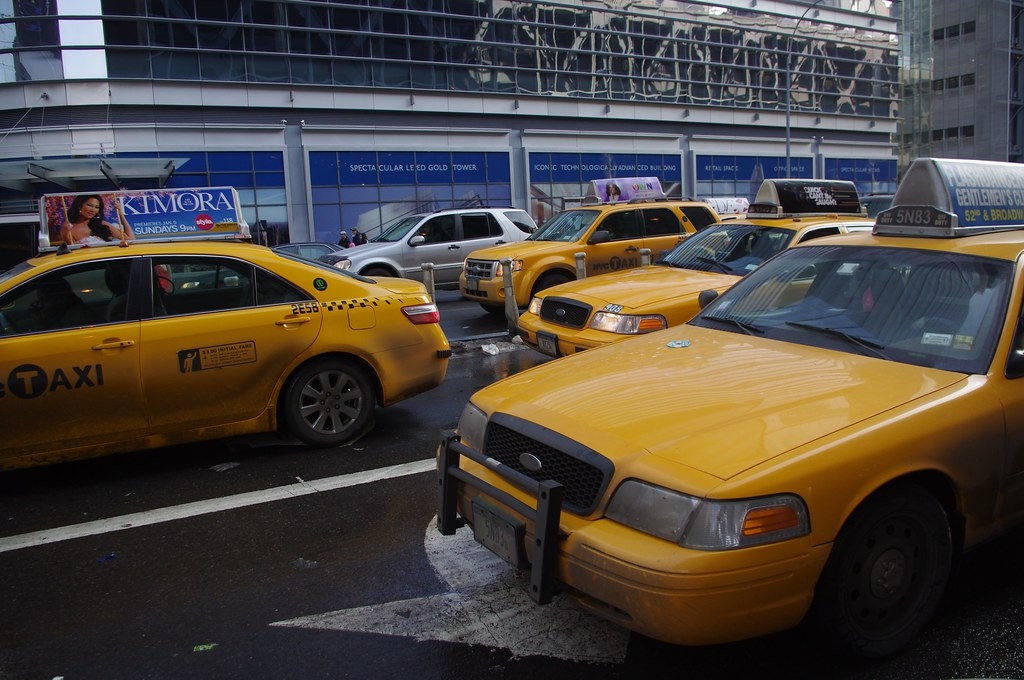by Henry Su

Photo: David Merrett/Flickr
In New York City, it’s hard to go far anywhere in the boroughs without seeing a few yellow taxis on the road. For decades they have been the symbol of New York’s congested traffic, and the image of a rough-around-the-edges cabbie has become a classic piece of Americana. However, more recently, another type of car has become increasingly commonplace on the streets of the city: passenger vehicles with a windshield sticker indicating their Uber or Lyft service. And while on the surface, it seems as if the animosity between these two groups isn’t over much more than aggressive driving, the meteoric rise of ridesharing apps have forced some taxi drivers in other places in the world to resort to extreme measures.
In Johannesburg, South Africa in 2017, city taxi drivers were arrested for torching two cars operated by Uber drivers. In South Africa, violence between taxi drivers and rideshare operators has increased in the years since ridesharing’s introduction, as many taxi drivers feel they have been shortchanged by the business model of ridesharing. And while violence is not present in New York, many cabbies share the same sentiment. Many modern travelers see the model of the metered fare taxi as expensive and obsolete, when apps offer a more available and diverse selection of experiences. The process of rating taxi drivers and selecting for better services is obfuscated beneath the bureaucracy of the city’s management, and for Uber it’s down to a simple press of the button to filter out poor drivers with ratings.
The system for becoming a rideshare driver versus taxi ownership is also much harder for taxis. Taxi drivers must complete numerous state certifications and pay hundreds of dollars in fees, as well as acquire a special “medallion”, which necessitates a large sum due to their transferability and limited quantity. Many cab companies also allow drivers to lease the cab from the company itself in order to drive by taking out a loan, which, when paid with interest on the meager average salary of $22,000 annually for drivers, is often a lifetime commitment- and drivers also handle maintenance. On the other hand, Uber drivers only need minimal certifications, and their own four-door vehicle. There are no fees and once a background check is administered, drivers are prepared to start taking customers. In order to bridge the gap, some taxis have made their taxis hailable through the Uber app, but the majority of riders select regular Uber instead. Because of this ease of entry, the driver-base for yellow cab companies in the city is shrinking. Revenues for taxis in NYC have fallen significantly since rideshare’s introduction in 2015, while the amount of money Uber and Lyft pull in has snowballed in the last years due to minimal limitations.
Some city taxi drivers feel as if the profession is becoming quickly outdated and unsustainable, and resent rideshare operators for taking over their customer base. However, this past summer, New York City passed legislation placing limits on the amount of rideshare drivers on the street at once, and regulated driver hours “cruising” for customers, which introduced some limitations to the market. Despite this, cabbies still feel that the city is doing little in the way of protecting their profession.
Although ridesharing companies have lost some traction in recent years due to what economic experts refer to as “poor management” (see a $5.2 billion quarterly loss and a disappointing IPO), their presence in the metropolitan area seems inevitable for the time being. It remains to be seen if NYC can do enough for taxis to save the industry, or otherwise, life in the city may lose a bit of its yellow hue.
